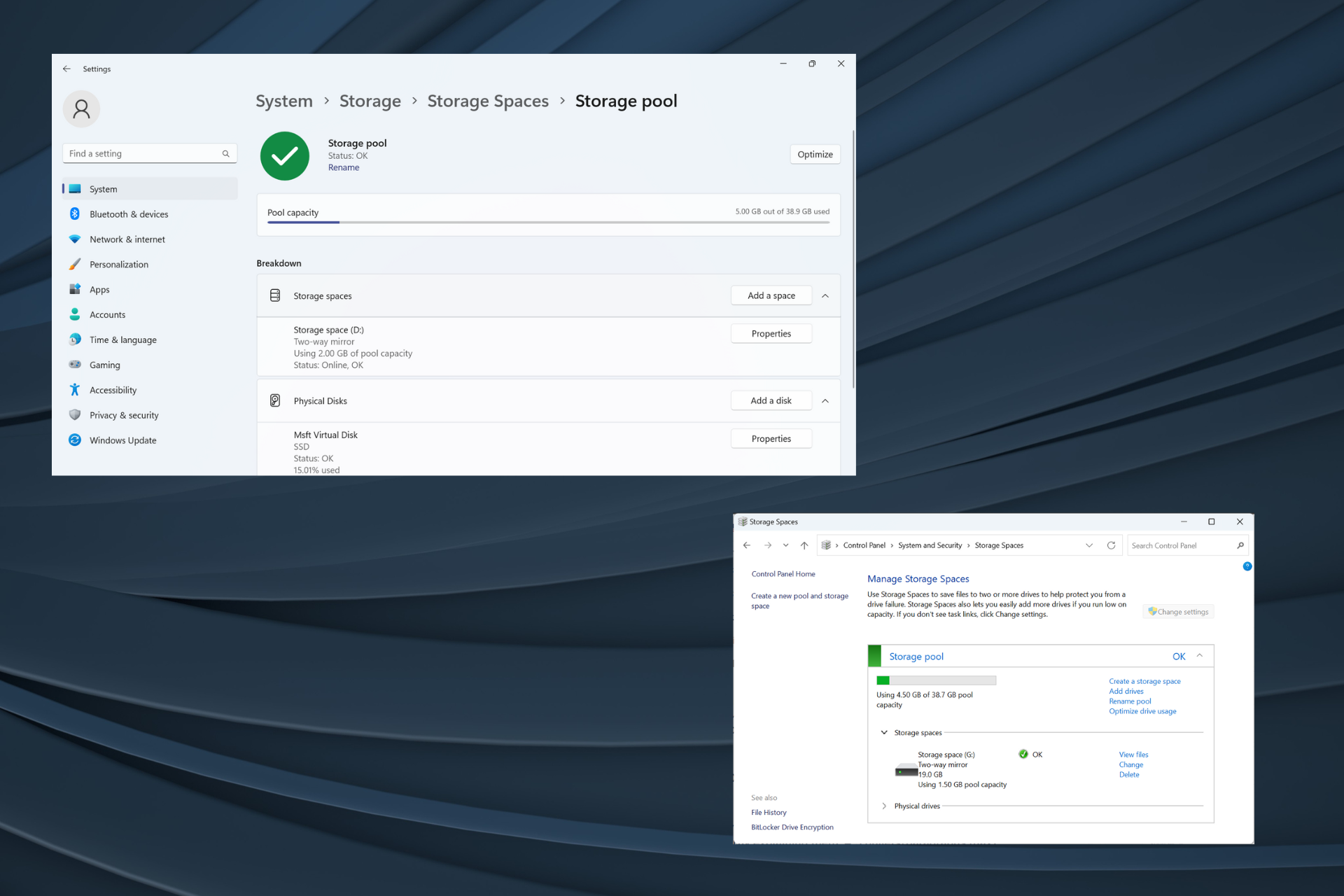
RAID or Redundant Array of Independent Disks is a data storage technology in which multiple external drives are combined into one. It was widely used when large hard drives were expensive, but many people still prefer the RAID external drive method.
There are several levels of RAID, each serving a specific purpose. Keep in mind that the average user doesn't have to delve into the complexity and a simple setup of RAID 0 or RAID 1 should work just fine.
Reasons to consider raiding an external drive:
- Improved PC performance
- Easy to configure, cheaper than existing alternatives
- Faster Data reading and writing
- Efficient backup solution through mirroring
How to RAID external drives on Windows 11?
Before RAID external hard drives, there are a few prerequisites to note:
- Two external drives for RAID 0 and RAID 1, three for RAID 5, 4 hard drives for RAID 10. The drive should be unformatted and of the same brand (preferably), size, and speed.
- RAID erases all existing data, so be sure to back up the drive beforehand.
After you have everything ready, choose any method to set up the RAID system.
1. By Settings
- Press I to open Settings, then click Storage on the right in the System tab. Windows

- Expand Advanced Storage Settings and click Storage Spaces.
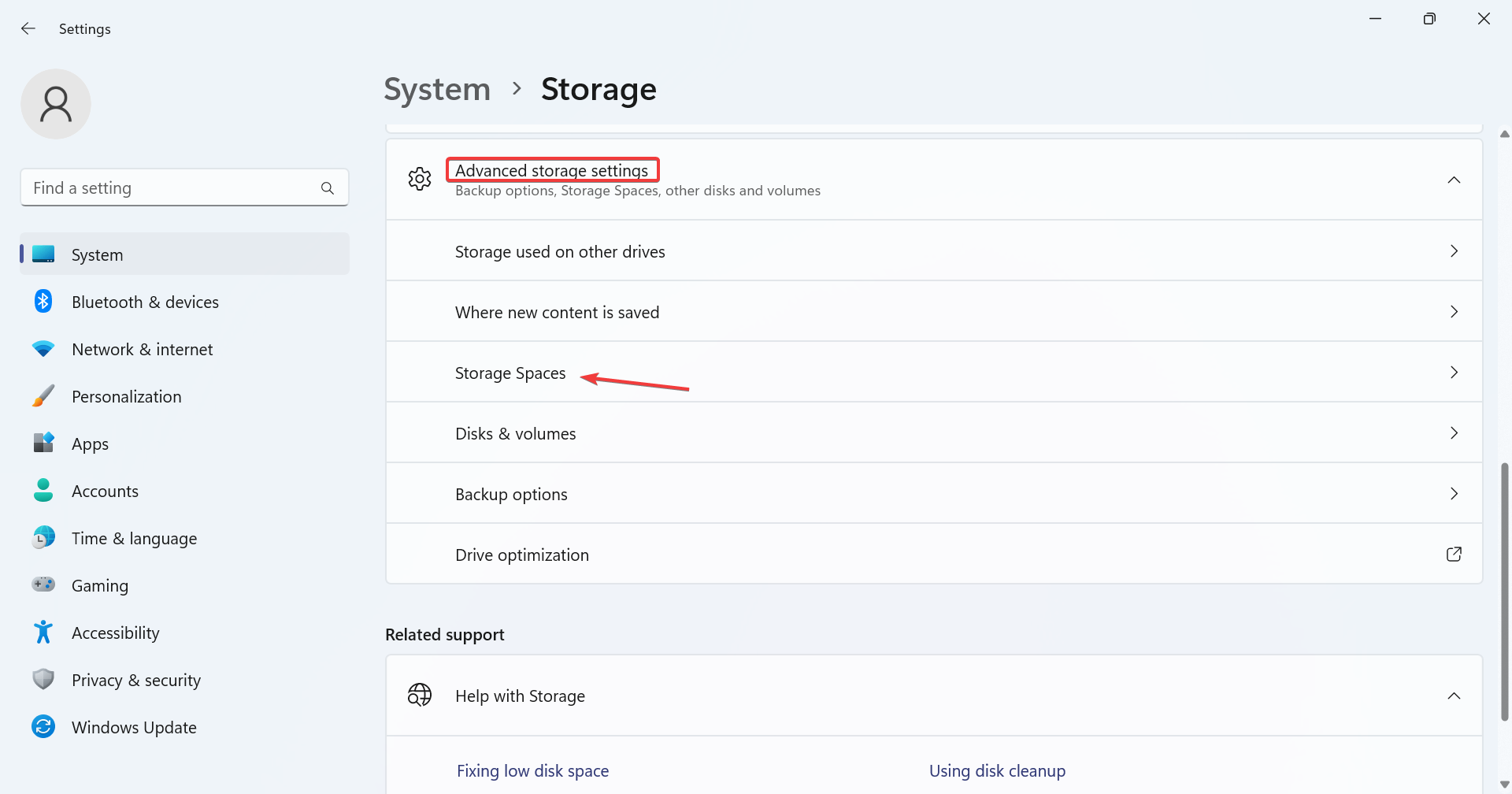
- Click the Add button next to Add a new storage pool.
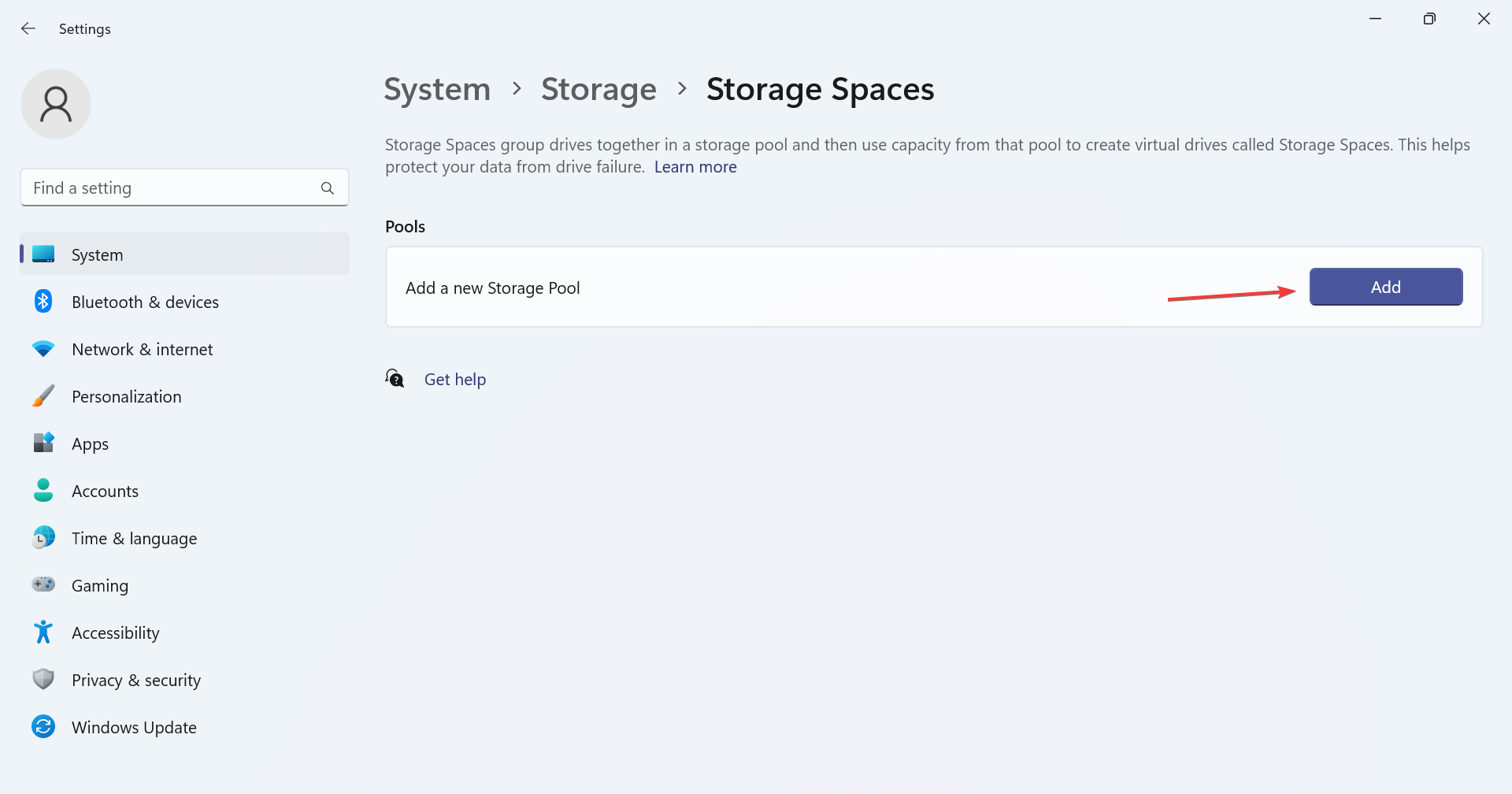
- Enter the name of the storage pool in the text field, select the desired disk from the list, and click Create.

- Type a name for the storage space, enter the desired size (it can be larger than the disk size, but we recommend not doing this), and then select a recovery type from the following options:
- Simple (non-resilient)
- One-way mirror
-
Two-way mirror (preferred due to data loss protection)
-
Parity (Preferred)
- When completed, click Create.

- Enter the label name, select the drive letter and file system, and click Format. You can check the advanced options to configure more settings.

- Once completed, the RAID settings can be accessed from File Explorer.

- Additionally, storage pools can be reconfigured or optimized from the storage space settings.
This is how you can use RAID to connect multiple external hard drives together and use them for data storage with advanced protection measures. Remember, it’s best to keep the RAID options simple or selected by default for an error-free experience.
2. From Control Panel
- Press to open Search, type "Control Panel" in the text field, and click on the relevant search results. WindowsS
- Click "System and Security".

- Click "Storage Space".

- Now, click Create New Pool and Storage.
- Click "is" at the UAC prompt.
- Check the checkbox of the disk you want to add to the storage pool, and then click Create Pool.
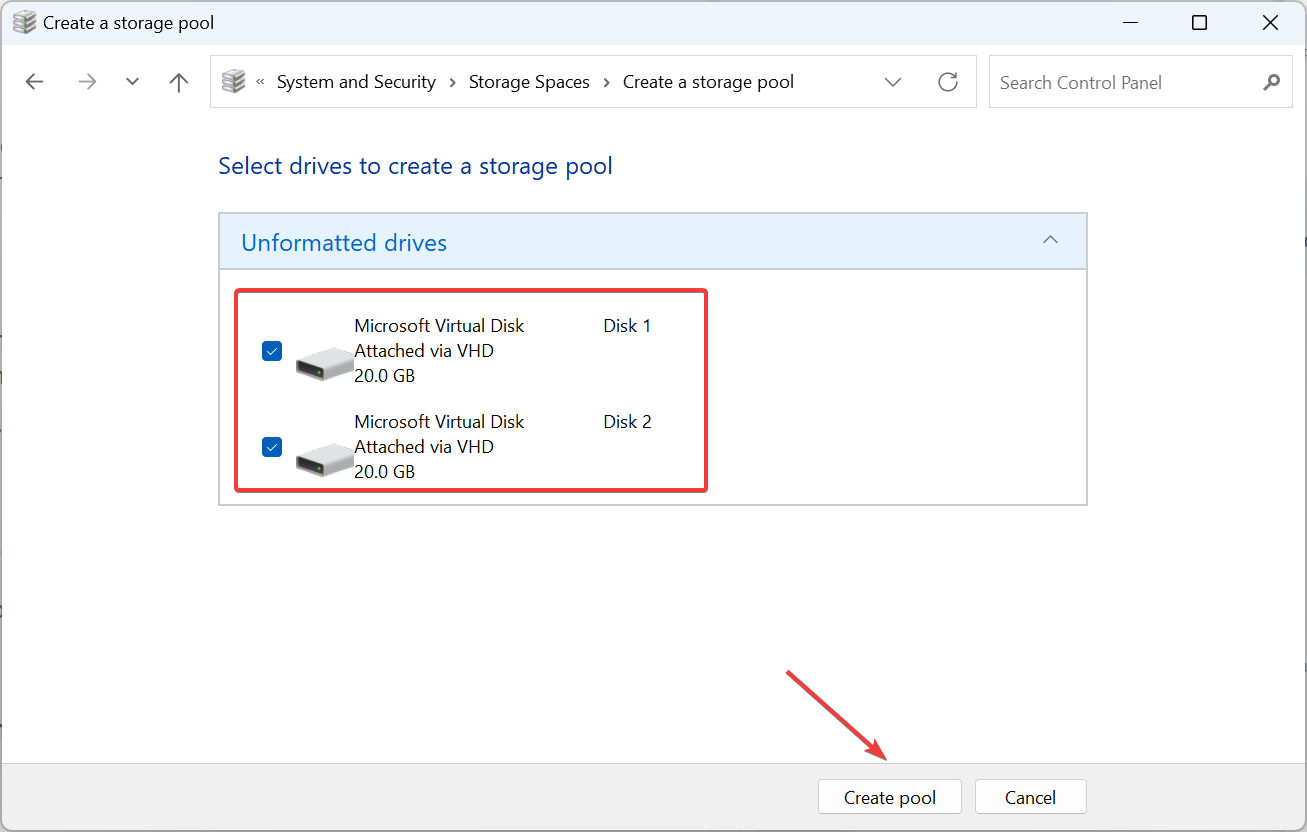
- Now, enter a name, select a drive letter and file system, select a recovery type (preferably two-way mirroring), configure the pool size, and click the Create Storage Space button.

- Created storage spaces will now be listed under dedicated sections in Control Panel and File Explorer. Here you can modify settings, rename the pool, add drives, or delete storage spaces.

This is how you can set up a RAID array with 2 external hard drives. Keep in mind that it only works with RAID 0 and RAID 1. Other more advanced types require more drives.
3. Via Command Prompt
 Note that the process requires converting the disk to a dynamic disk, creating a RAID setup, and finally formatting it. To simplify, let's break the process down into parts. But we recommend using Settings or Control Panel for easier setup.
Note that the process requires converting the disk to a dynamic disk, creating a RAID setup, and finally formatting it. To simplify, let's break the process down into parts. But we recommend using Settings or Control Panel for easier setup.
3.1 Convert to dynamic
- Press to open Run, type cmd, and then click . Windows#RCtrlShiftEnter
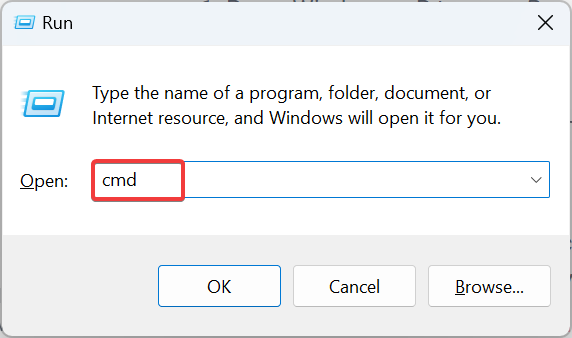
- Place an order at the UAC prompt Click "is".
- Paste the following command and click to start the Disk Part utility: Enter
<strong>diskpart</strong>
- Run the following command:
<strong>list disk</strong>
- Now, execute the following command to convert the disk to be added to the RAID system to dynamic type, replacing X with the number assigned to the disk:
<strong>select disk X</strong><strong>convert dynamic</strong>
- Repeat this operation for all such disks.
3.2 RAID External Hard Drive
- Run the following command to select the first disk, replacing X with the disk number:
<strong>select disk X</strong>
- Next, execute the following command to create the RAID volume (for more disks, list them in the command):
<strong>create volume RAID disk 1 ,2,3</strong>
- Run the following command to identify the number assigned to the RAID volume:
<strong>list volume</strong>
- Execute this command, replacing X with the assigned number:
<strong>select volume X</strong>
- Next, run the following command to format and then assign the label:
<strong>format fs=NTFS label=Storage Volume</strong>
- Finally, run the following command to Assign a drive letter of your choice (replacing X):
<strong>assign letter= RAID the external drive, but using these commands it will be RAID level 0. To set another level, you need to run a bunch of other commands. </strong>Keep in mind that Diskpart is an advanced tool that helps eliminate any errors you encountered before.
4. Use third-party software
If the built-in method sounds too complicated or you don’t want to manually RAID an external hard drive in Windows 11, use reliable RAID software.
These are easy to use and have built-in mechanisms to optimize drives and prevent data loss. Go for one, you won't regret the decision!
RAID Levels – Know Your Options
There are several RAID levels, each divided into standard, nested, and non-standard. The Standard RAID category was the first one released and is widely used even today. It includes:
RAID 0
: Best performance, but least protection.
- RAID 1: Data storage is duplicated, improving read performance.
- RAID 2: Uses striping, but has become obsolete over the years.
- RAID 3: One drive is used to store parity information, also striped.
- RAID 4: Use large striping and eliminate I/O overlap
- RAID 5: At least three disks, preferably five . Allows a RAID array to function normally if one drive fails.
- Nested RAID levels are combinations of standard levels, such as RAID 10 (RAID 1 RAID 0). Keep in mind that you don't necessarily need an external drive to complete this process. You can RAID 1 an external hard drive by creating a virtual drive on it!
Also, if you encounter any issues, download the RAID controller driver for seamless performance.
The above is the detailed content of How to RAID an external hard drive on Windows 11. For more information, please follow other related articles on the PHP Chinese website!














 Note that the process requires converting the disk to a dynamic disk, creating a RAID setup, and finally formatting it. To simplify, let's break the process down into parts. But we recommend using Settings or Control Panel for easier setup.
Note that the process requires converting the disk to a dynamic disk, creating a RAID setup, and finally formatting it. To simplify, let's break the process down into parts. But we recommend using Settings or Control Panel for easier setup. 








